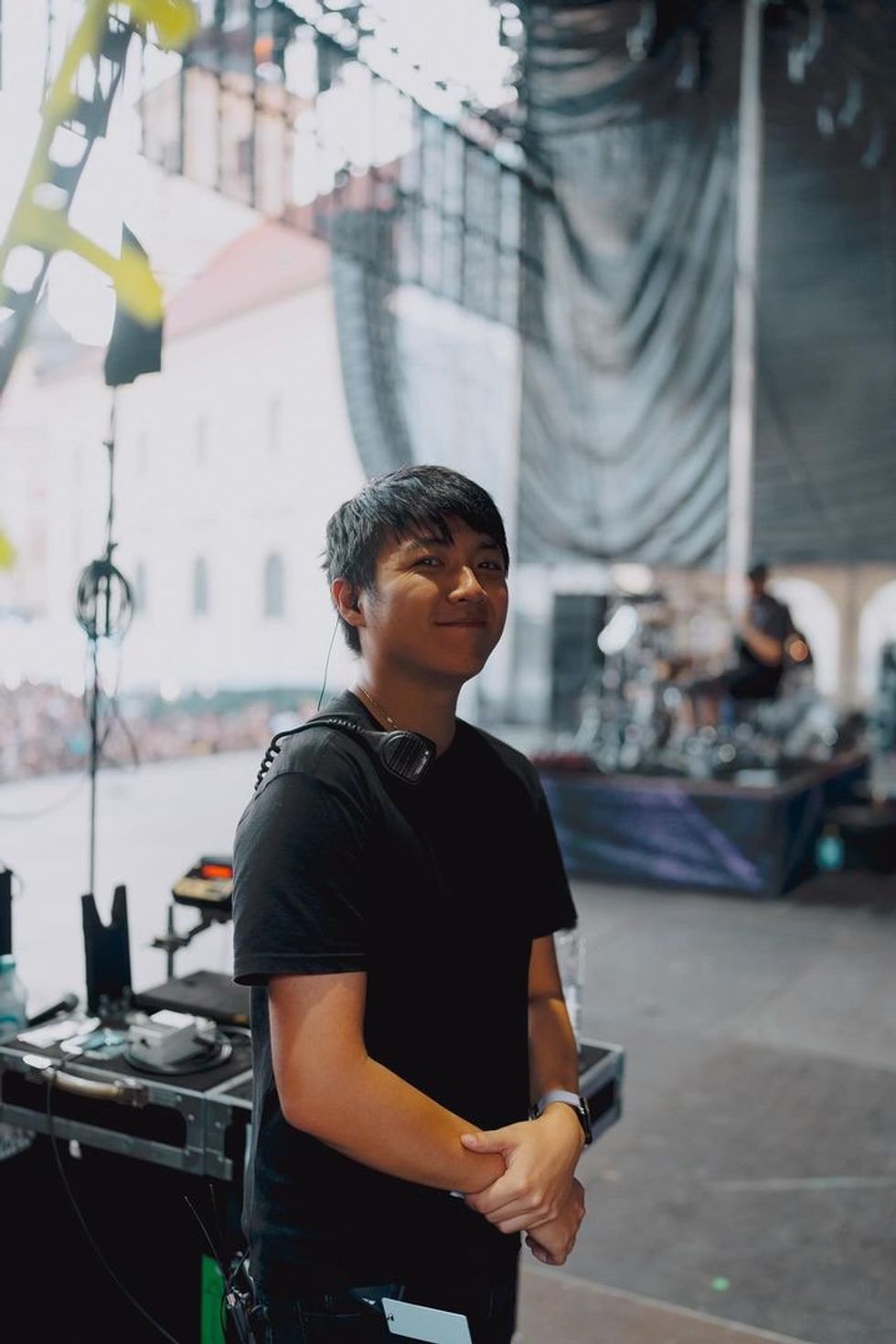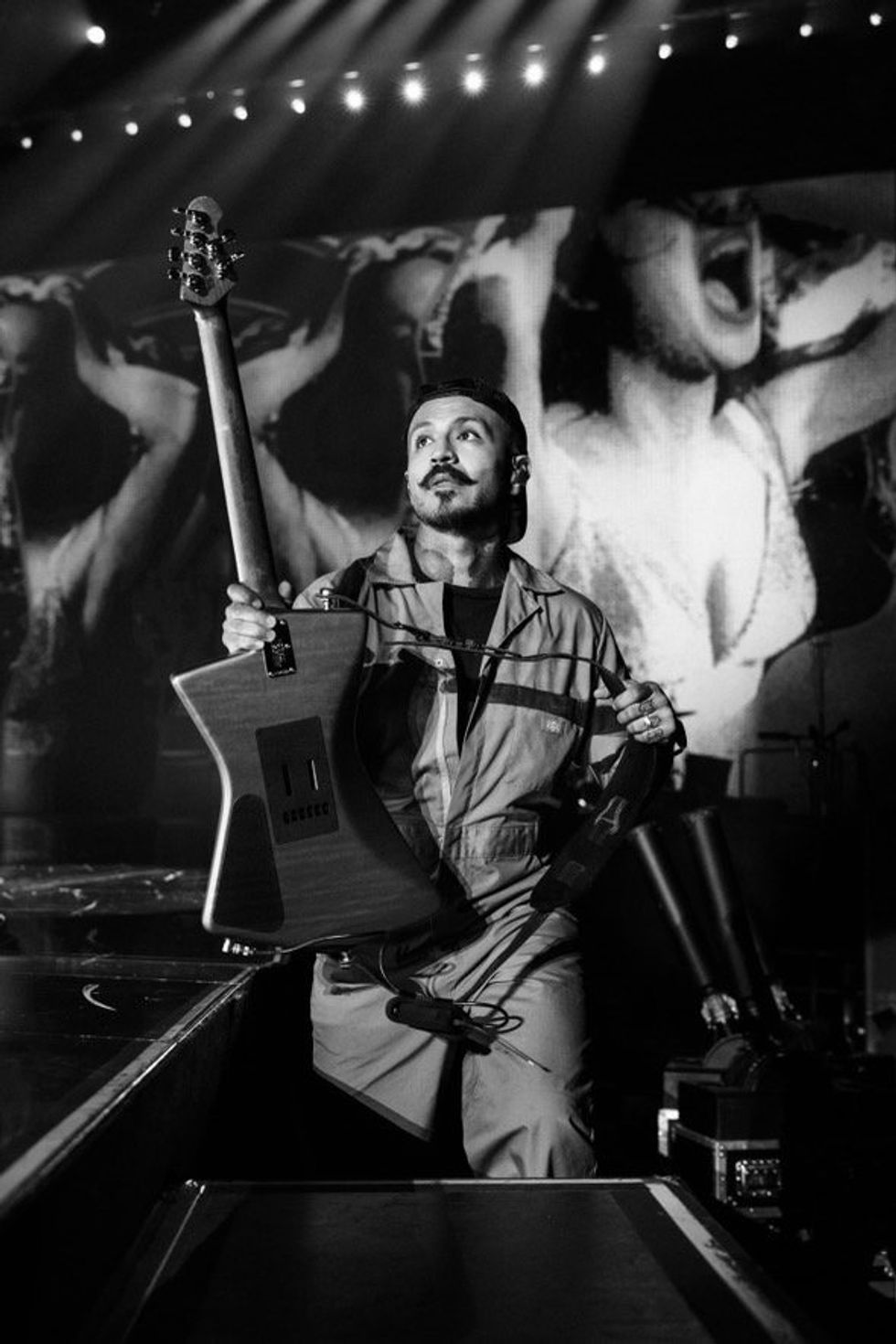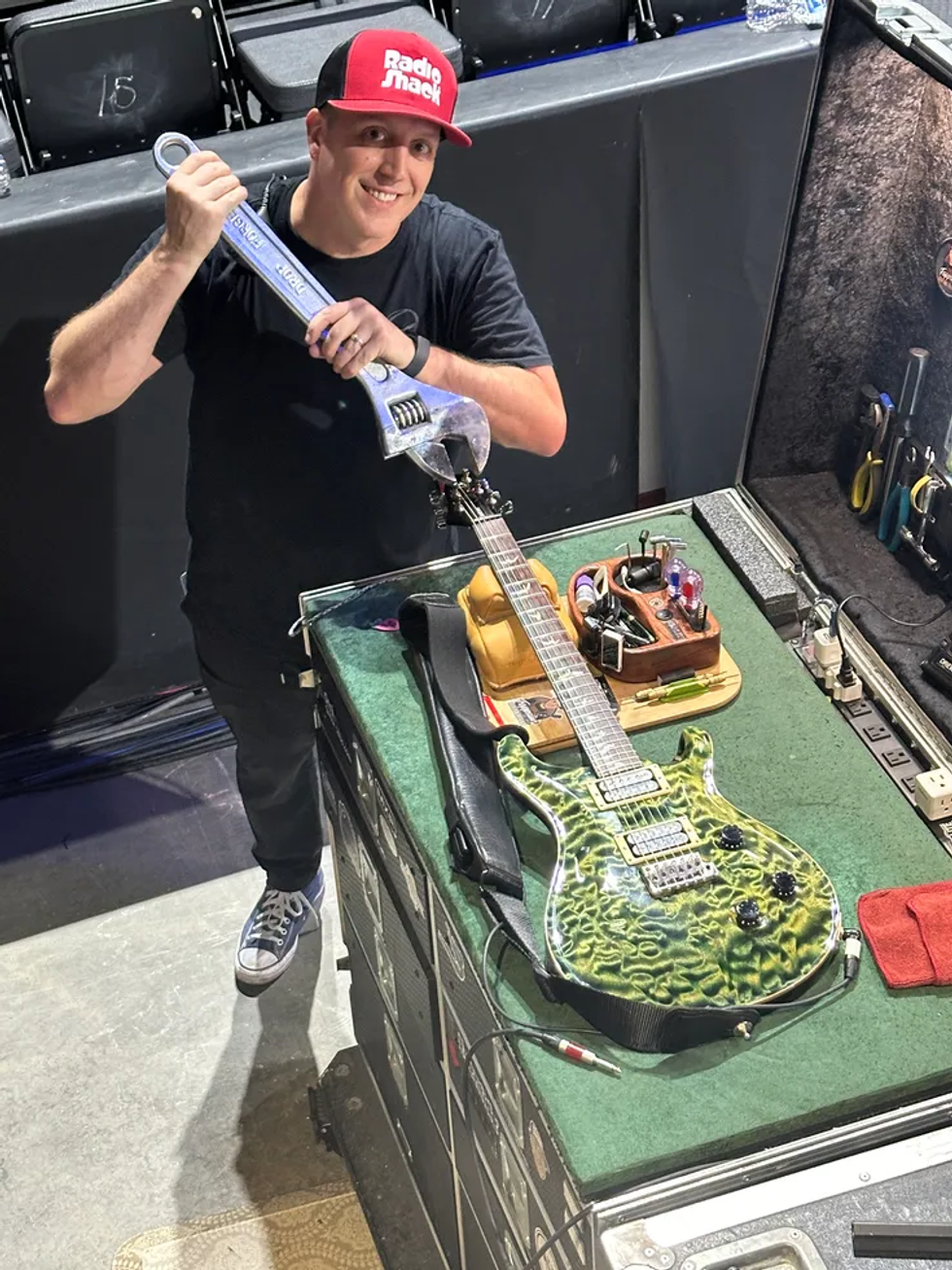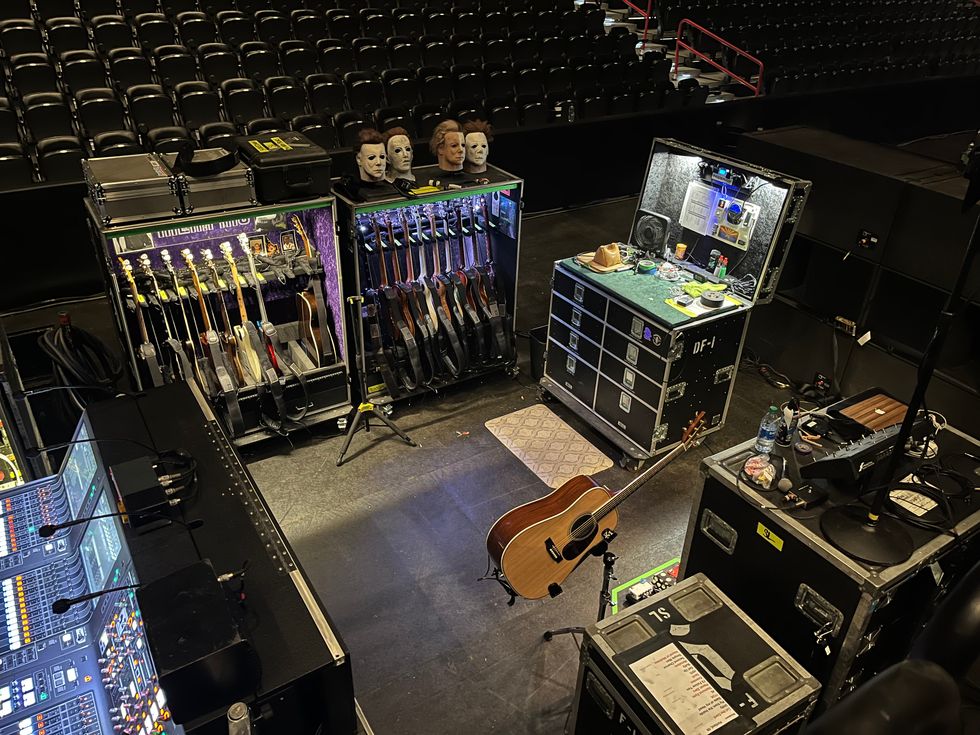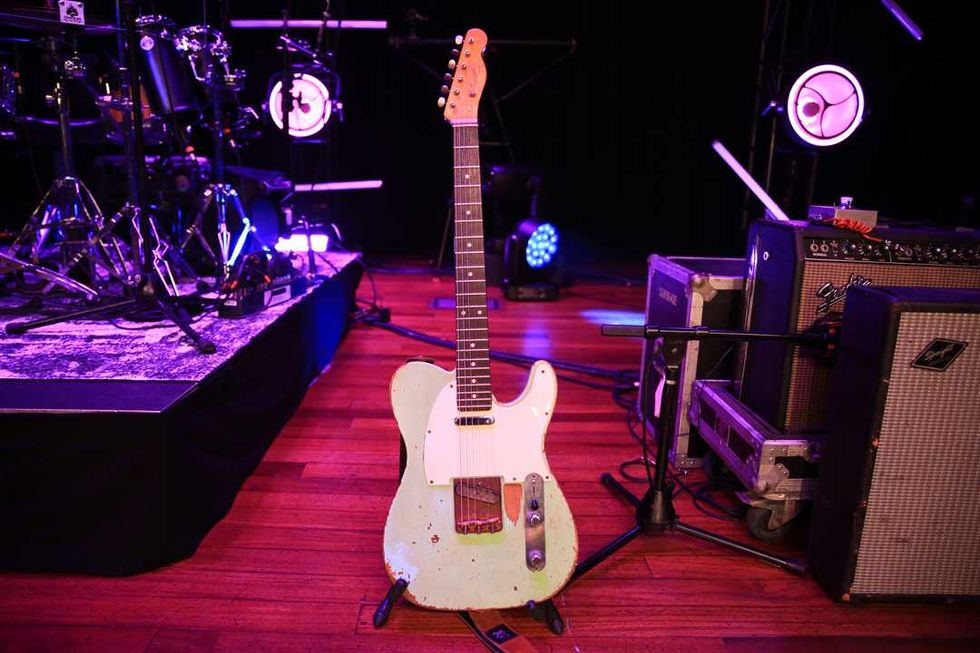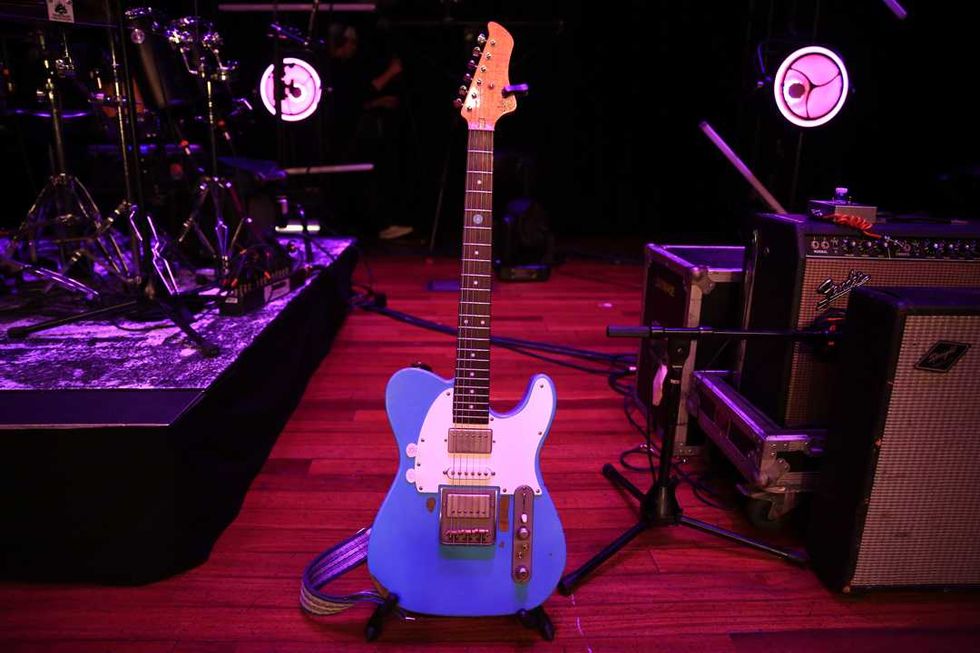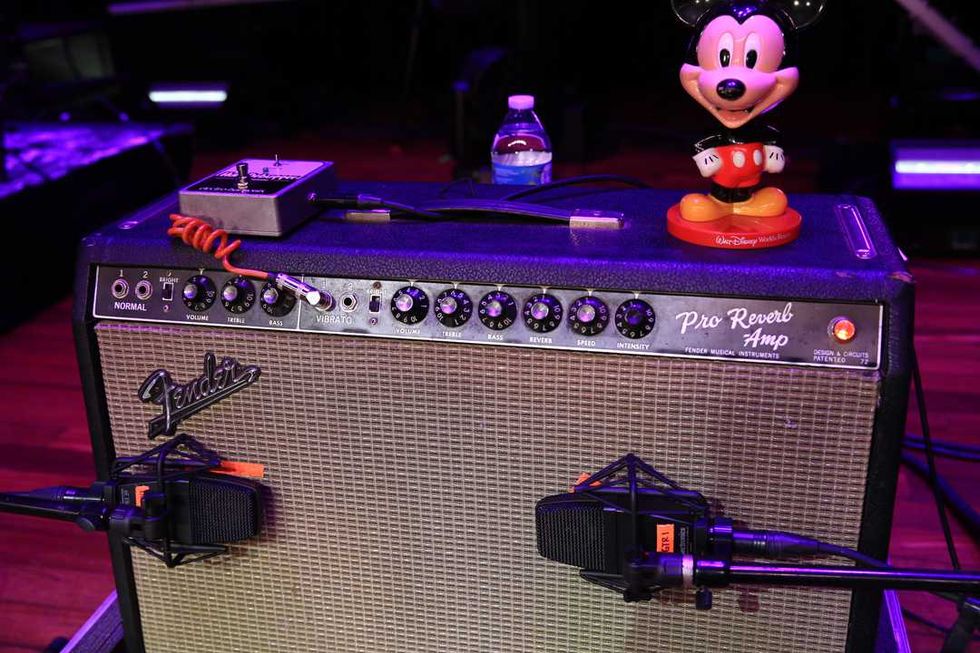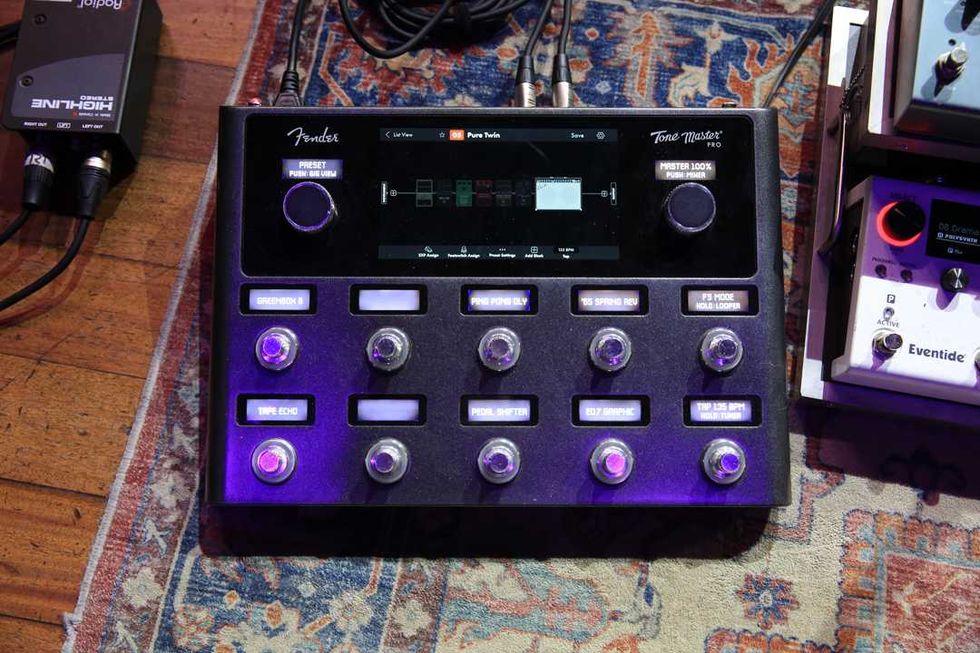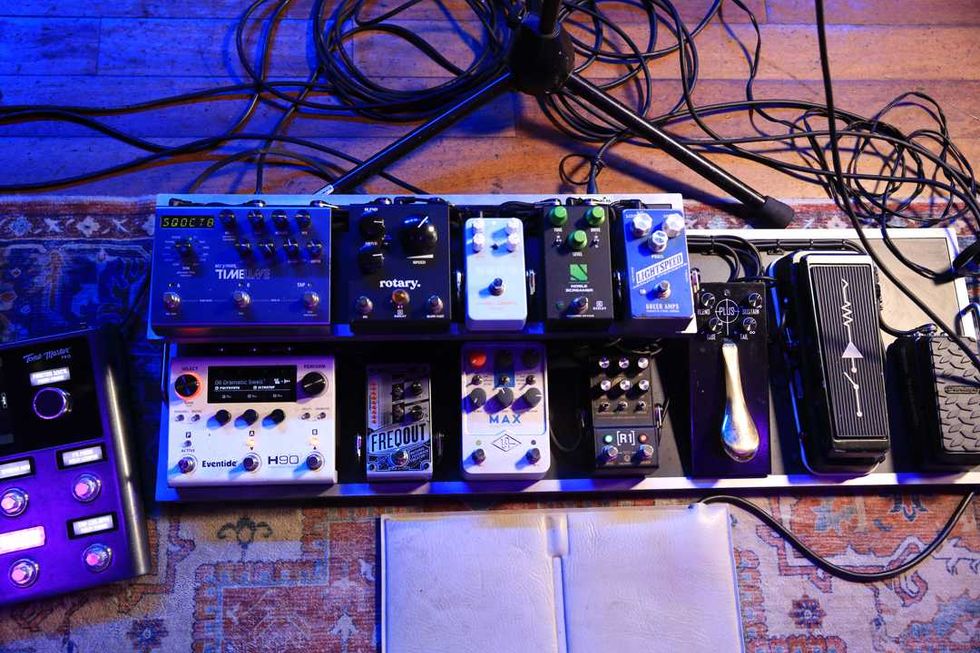When a new band strikes it as big as Franz Ferdinand did in 2003 with their danceable post-punk radio hit “Take Me Out,” hardcore guitarists can be dismissive, ignoring subtleties like the intro’s deceptively simple tempo changes, or how brilliantly the lean, snarling dual guitar parts shift and slither within the relentless tide of the band’s lockstep rhythm section.
Such attitudes don’t hurt the feelings of Alex Kapranos and Nick McCarthy, Franz Ferdinand’s guitarists, one bit. The two Scots are completely out of the guitar-ego loop. “I tend not to write parts to show off my skill or new techniques,” Kapranos says. McCarthy is a bit more lighthearted about it, recounting how, while the band was tracking their latest album, Right Thoughts, Right Words, Right Action, he tried to master a fast picking technique. “I had to stop,” he says. “I was laughing too much.”
If kneejerk dismissiveness hurts anyone, it’s players who could learn a thing or two from Kapranos and McCarthy about composition, mood, and sparseness. Both players have fresh perspectives on the art of guitar, though they stem from very different backgrounds. McCarthy’s guitar work is informed by his training as a classical pianist and double bassist, while Kapranos playing is refreshingly naïve. In fact, he started playing guitar the year before Ferdinand made it big.
We recently spoke to the two guitarists about devising great parts, recording Right Thoughts, their meticulous miking techniques, and their fondness for offbeat gear from Harmony, Silvertone, Hagstrom, Hoyer, Selmer, and Traynor.
What was the writing process like for Right Thoughts?
Alex Kapranos: The majority of writing was done before the recording. We didn’t go near the studio until we had songs that we could all play and we understood how they worked. That’s quite different from our last LP [2009’s Tonight], where we started off with grooves and beats upon which we wrote melodies and then lyrics. Nick and I write most of the music together, although sometimes Bob [Hardy, bassist] and I start with a lyrical idea that I’ll work on with the guitar or piano. This is a very live album. Every song has a live performance of the four of us in a room together at the heart of it.
Nick McCarthy: Our playing is just writing music. It’s not the specific instrument, but the whole thing. Our main goal is always to just write some good songs and then record them.
Did you have any specific visions for the overall sound of the new album?
Kapranos: One principle was the shedding of chords in favor of melody and countermelody. It’s fine to use chords for the writing of the main melody, but when it comes to the final arrangement we’d lose the chords so that progressions were suggested by the melodies, rather than played out.
McCarthy: I think this album sounds very much like us. It’s very honest and open, and it lets you get inside what we are and what we like/ That was the plan. It worked out for some reason, I think. It doesn’t always, of course.
Kapranos: The new sounds came partly from trying new playing ideas, but mainly with the writing and arrangement. Nick and I spent a long time listening to records we liked—particularly classical music—to see how they were arranged. I know our music sounds nothing like that, but the principles are universal.
After you conferred on that more compositional approach, how did you go about writing the guitar parts?
McCarthy: I usually write on an old acoustic that I bought in Germany for 10 Deutsche marks, just because I like the history of it. I take it on tour sometimes or write on it when I have a few hours at home. I really like playing the piano as well, so I switch between the two. Then we usually electrify the whole thing and get rid of the chords and play single notes. That seems to work for us.
Kapranos: I usually write with an acoustic, too. I have an old Gibson, but my favorite is an old Harmony guitar conversion by Colfax Guitar Shop in Denver. They take old Kay, Stella, and Harmony guitars and re-brace them by hand. You’re left with a low-budget guitar that sounds as rich as a Martin, but you’re not afraid to leave it lying around, spill wine on it, or knock it over. When it comes to the final arrangement, I normally pick up one of my favorite electrics—an old ’66 Tele or my ’73 Tele Deluxe.
The Scots revisit the hit that started it all—“Take Me Out”—at the 2009 Glastonbury Festival.
Do you sit down and hash out guitar parts together?
Kapranos: Nick and I always interweave our parts. I think of them like a lattice—woven together, occasionally overlapping, but generally following distinct routes that make up the strong whole. I’d say neither of us plays “lead” or “rhythm,” but we both play “rhythmic melody.” We’ve always seen ourselves as a dance band as much as a rock ’n’ roll band, so the rhythmic composition and playing is as important as the melody.
Tell us about the process of capturing your guitar tones in the studio.
Kapranos: We recorded a lot of it at Black Pudding, my studio in Scotland. Over the last few years I’ve spent a lot of time working on how to record a natural but powerful sound. I’m not a fan of close-miked cabs. I usually place the mic directly in front of the cone, but between one and four feet away, depending on where it will be in the mix. This creates what I think of as a 3D sound—the equivalent of adding shading or perspective to a picture. As I mentioned, most of the playing was live. We work better when we play the parts live rather than building up overdubs. It feels more alive that way. You get more precision from overdubs, but the overall effect is a little anodyne for my taste.
McCarthy: I’ve got two basic tones that I always go for in the studio. One is Angus Young’s tone, and the other is a tone similar to what Talking Heads get. I like to keep it simple, so that I don’t overthink anything. I always prefer simplicity.
McCarthy onstage with the Gibson SG Classic he fell in love with at a Chicago pawn shop. Photo by Frank White.
What gear did you use for the sessions?
McCarthy: I used a white Gibson SG that I found in a secondhand shop in Chicago and fell in love with. I also used an old Fender Stratocaster that I borrowed from a friend. Quite standard stuff really, nothing too exciting.
Kapranos: I have a small collection of guitars, some regulars—like Gibsons and Fenders—and a few oddities, like Silvertones, Hagstroms, and Hoyers. I really like Hoyers. They’re an often-overlooked European brand with a distinct sound. I spent a lot of time researching cabs and speakers too. The way different magnets and construction can affect the tone and, particularly, the compression of the signal. I built up a few cabs with my friend [vocalist/guitarist for the Clientele] Alasdair MacLean in Scotland, using various Harmas and Webers for different sounds here and there. The best was a 4x12 with four very different ceramic and alnico magnets. It sounds very versatile, and you have a lot of control over the sound, depending on where you stick the mic. I’ve also picked up a few different amps over the years. I’ve always been a fan of old Selmers, but recently I bought a ’60s Traynor head, which I totally love.
In addition to its unusual pickup configuration–a Tele Deluxe-style bridge pickup, a P-90 in the middle, and a single-coil in the neck position–Krapanos' custom Specimen Products T-style has a kaleidoscppic pickguard made from 600 emerald beetle wings infused with urethane resin. Photo by Frank White.
How does being producers influence your approach to playing guitar?
McCarthy: I think you become aware of how your parts work in the bigger picture and lose the preciousness of every little riff you come up with. Of course some riffs have to be pursued, though. Producing can be a head game as well, like if you forget to plug the microphone—which does happen.
Kapranos: I love tinkering around in my own time and working out sounds—but not during a session, because that kills the buzz. Working as a producer is a great way of killing off excesses of ego. You realize that your performance is part of the whole piece, rather than just being supported by the other performances. It’s made me realize that the spontaneous and unconsidered performance is the best. It’s the personality of the player that matters, and I’m no exception.
How have you evolved as guitarists over the years?
Kapranos: I’ve become more fluent and less heavy-handed. I guess just like someone learning a language, you learn to express yourself more naturally as the years go by. My tone has changed a bit, too. It all depends on the song, but I never use pedals and prefer to go straight into the amp now. I usually like something that is pretty percussive, with a good attack to it. There are a few meatier sounds that I use now that came out on the new album, too.
McCarthy: I used to be a bass player for ages, and now I’ve just about learned the top two strings on the guitar. I’m very proud of that. [Laughs.]
McCarthy and Kapranos demonstrate their knack for intertwining guitar parts and complementary vocal harmonies in this 2005 MTV Unplugged performance of “Walk Away.”
How would you describe the guitar dynamic between you two?
McCarthy: I usually try to drown him out and pay off our sound engineer to turn him down a bit. He’s okay overall as a guitarist, but he could do with a bit of practice [laughs]. But honestly, Alex is a very unconventional, rhythmic, aggressive, forward, and locked-in player.
Kapranos: It’s very interdependent. He has quite a contrasting style to me, but we seem to fit together very well. We both tend to leave a fair amount of space in what we do, which is fortunate. Neither of us has particularly swollen egos when it comes to playing the guitar. I think that’s because we’re both writers first and players second. The playing is for the song, rather than the ego.
You two split vocal duties in the band. Has it always been natural for you to sing and play?
McCarthy: Well, I like singing, but Alex turned out to be the frontman. It seemed natural that way. Paul [Thomson, drums] sings a lot, as well. I love bands with a lot of singing. With multiple people singing, there are so many more melodies and harmonies to play with.
Kapranos: I was always terrible at lessons. I never lasted long with them, so I was never trained with singing and playing. I could always pick something up and work it out, though. I was a little self-conscious about singing in public at first until I realized that there is no need to fear. It took me a little while to get it down, but it started working over time.
Nick, you grew up playing piano and upright bass while studying classical music. How does that influence your guitar playing?
McCarthy: I learned how to analyze music through my studies at classical music school, and it comes in very handy all the time. Learning is fun, kids! I never thought so then, but now it helps me a lot.
McCarthy's Gibson SG Classic, Kapranos' 1973 Fender Telecaster Delxue, and Franz Ferdinand bassist Bob Hardy's vintage Rickenbacker chilling backstage before the band's July 23rd show in New York. Photo by Frank White.
Alex Kapranos' Gear
Guitars
1973 Fender Telecaster Deluxe, 1966 Fender Telecaster
Amps
Carr Slant 6V, 1960s Traynor head driving 4x12 cab with alnico- and ceramic-magnet Weber and Harma speakers
Strings
Rotosound R11 Roto Reds (.011–.048)
Nick McCarthy's Gear
Guitars
Gibson SG Classic, 1959 Hagstrom P46 Sweetone
Amps
Carr Slant 6V, Carr The Viceroy
Strings
Rotosound R11 Roto Reds (.011–.048)
When did you both begin playing guitar?
Kapranos: I actually first started playing guitar in 2002. Nick and I had a punch up at a party, and then Bob and I had talked about starting a band. I know it sounds weird, but the next day we did it.
McCarthy: My older brother started showing me how to play when I was 11 years old. He also showed me how to write a song. I couldn’t believe it—I didn’t realize you were allowed to write your own songs! I thought it was someone else who did that. I guess I’ve been doing it ever since.
Who are your biggest influences on guitar?
Kapranos: Andrew Conway. I know it sounds daft, but he was my best friend at school, and we learned at the same time. He’s always been my biggest musical influence.
McCarthy: The Beatles, Jimmy Page and Led Zeppelin, Angus Young and AC/DC, David Bowie, and Run DMC would all have to be my biggest musical influences.
Did either of you ever think Franz Ferdinand would become so successful when you first began?
McCarthy: Of course not. But it felt good right from the beginning, and we knew that we had a good thing going. It’s not every day you end up in a band where everyone has the same kind of ideas—there’s usually always one spanner in the works.
Kapranos: You imagine that kind of thing when you’re a kid in the same way you imagine a trip to the moon or climbing Everest. With this band I knew there was something good happening. I figured we’d sell at least 500 singles.
Franz Ferdinand’s Alex Kapranos and Nick McCarthy debut their new song “Evil Eyes” at the 2013 Coachella festival.

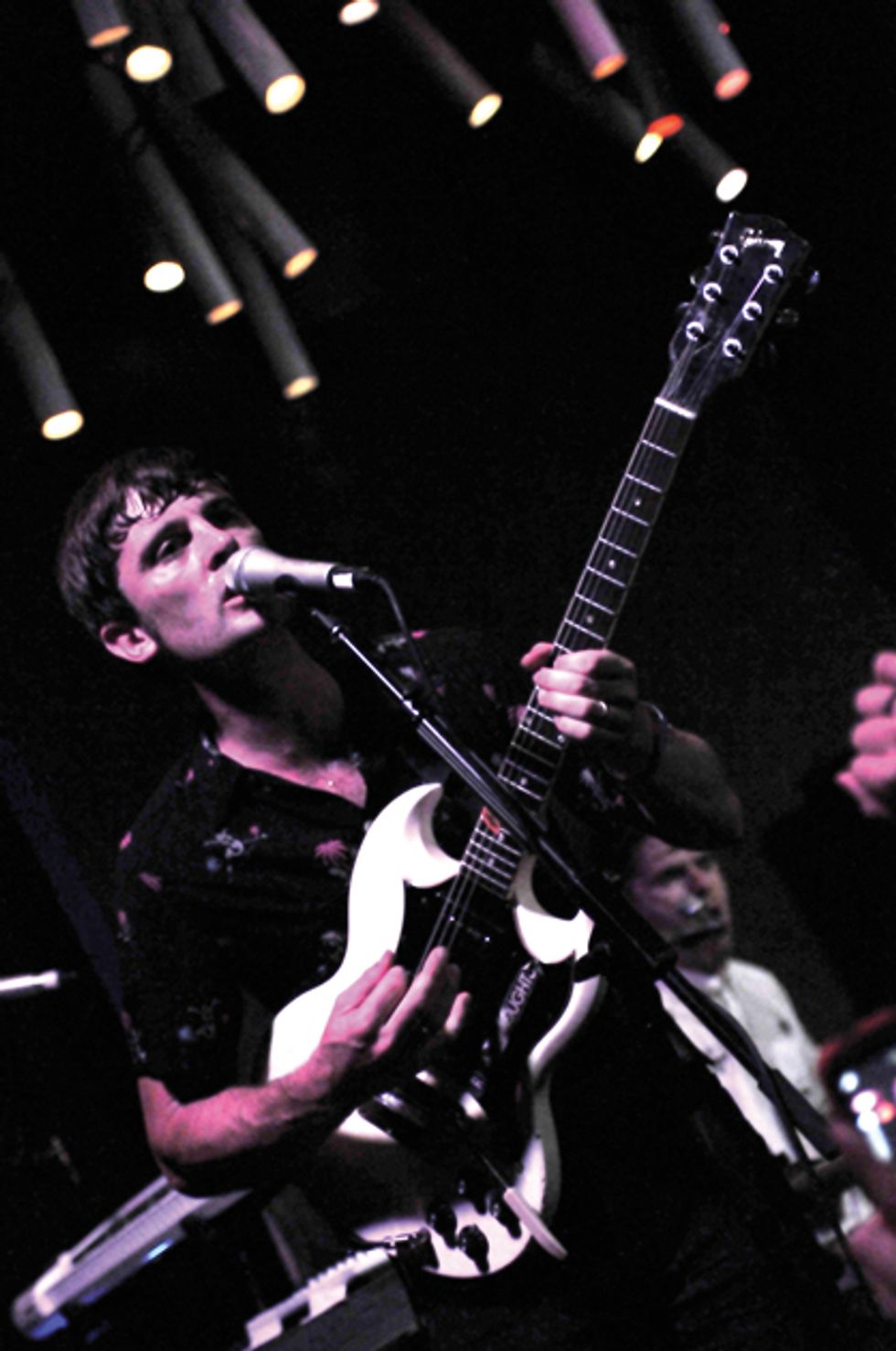
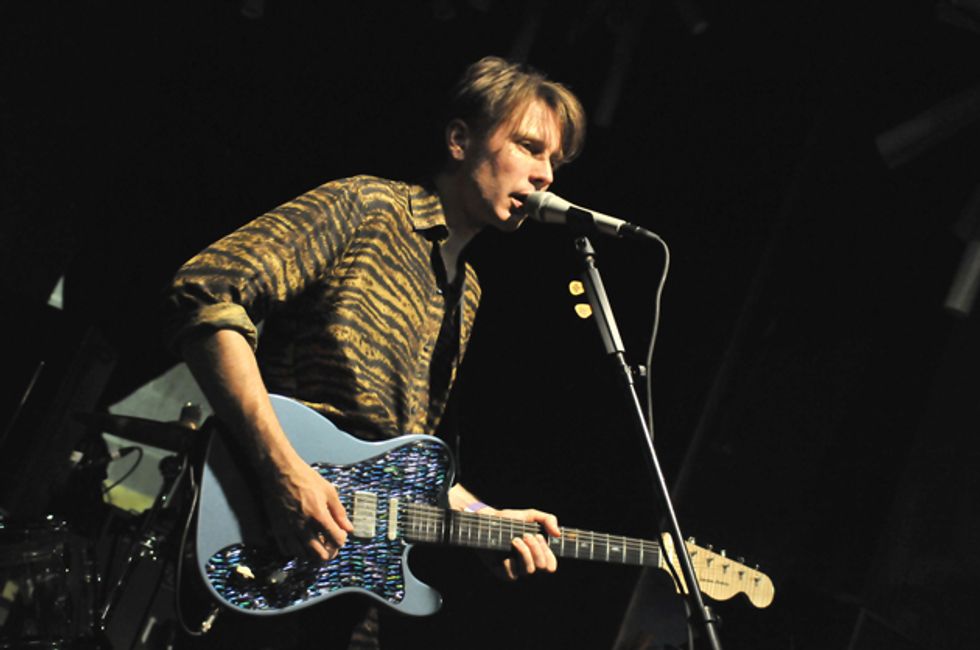
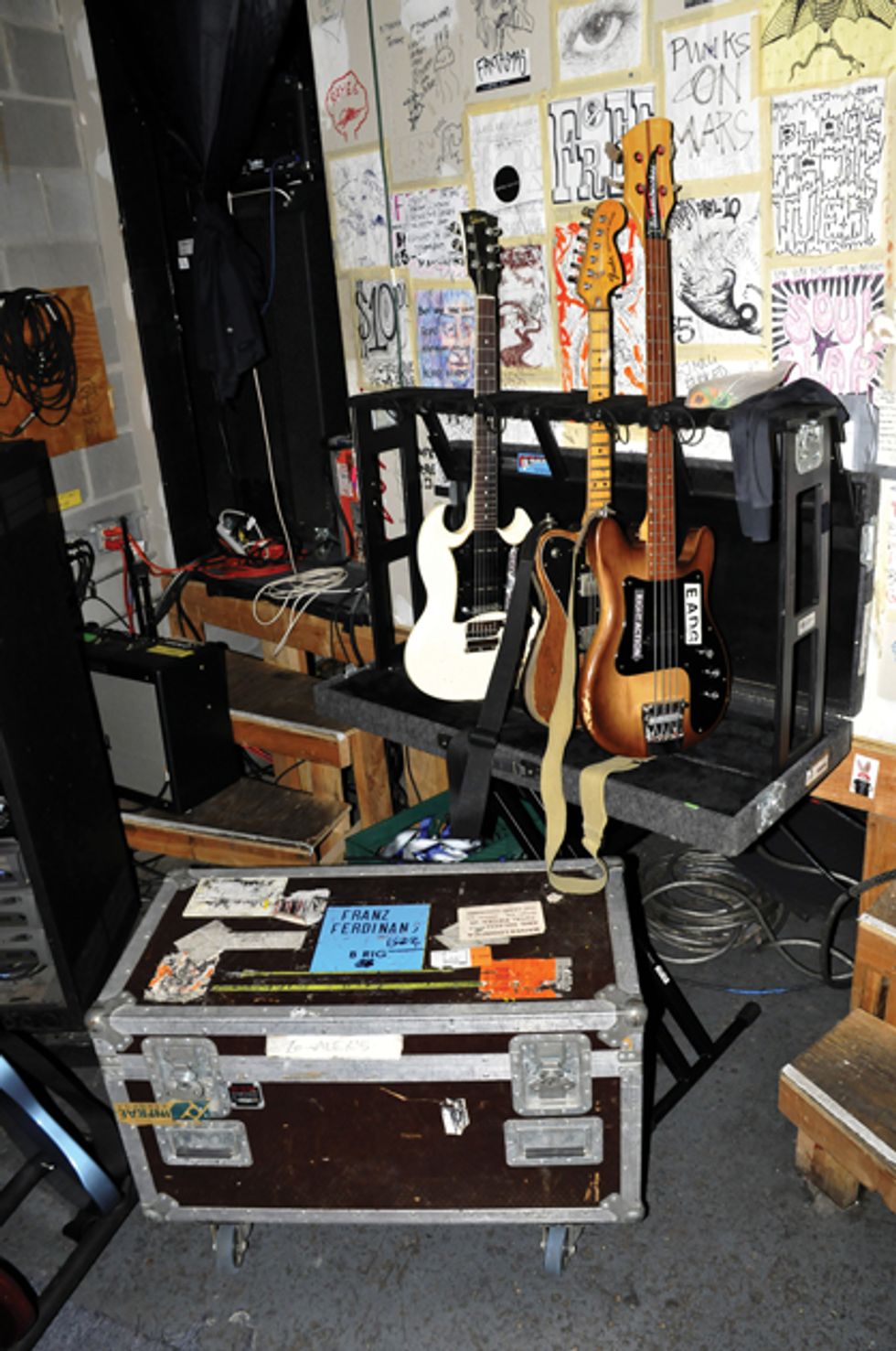




![Rig Rundown: AFI [2025]](https://www.premierguitar.com/media-library/youtube.jpg?id=62064741&width=1245&height=700&quality=70&coordinates=0%2C0%2C0%2C0)












 Shop Scott's Rig
Shop Scott's Rig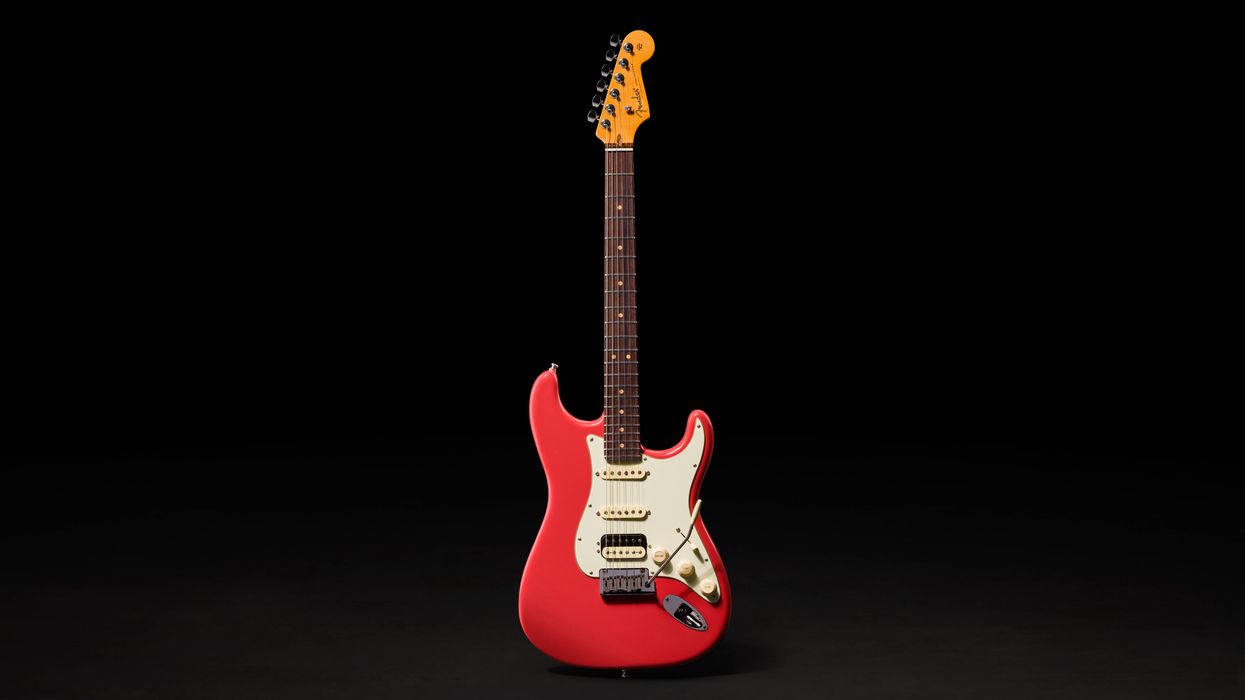

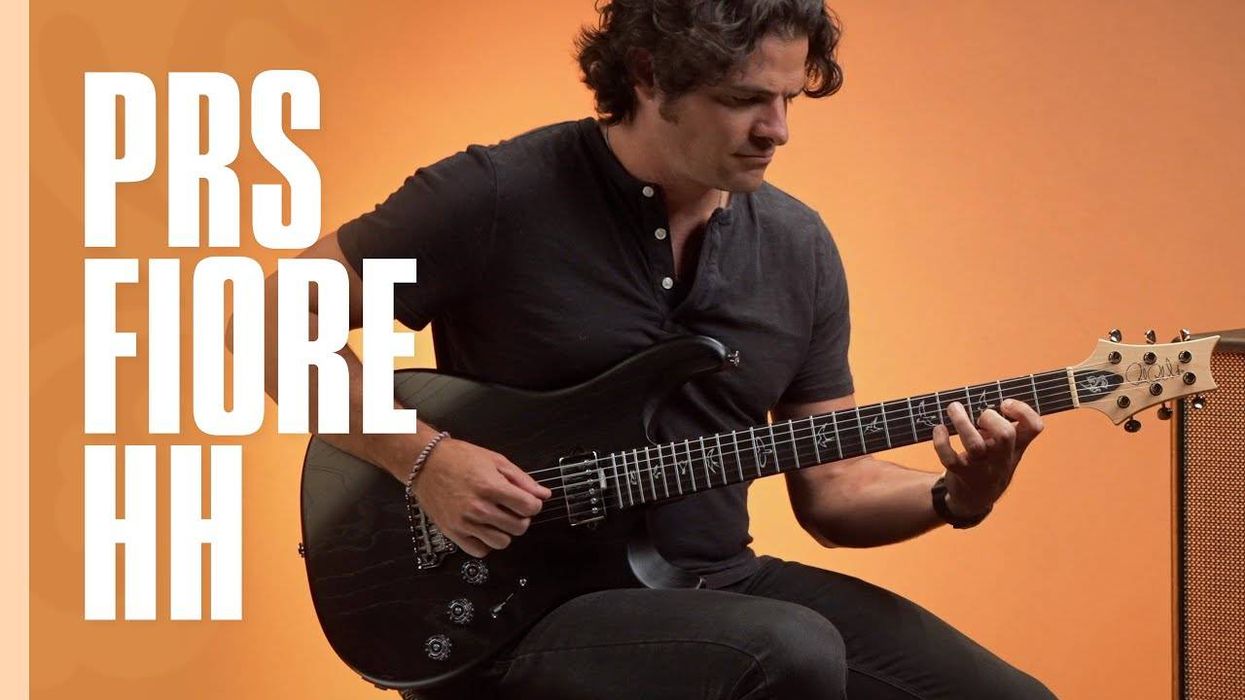
![Devon Eisenbarger [Katy Perry] Rig Rundown](https://www.premierguitar.com/media-library/youtube.jpg?id=61774583&width=1245&height=700&quality=70&coordinates=0%2C0%2C0%2C0)










 Zach loves his Sovtek Mig 60 head, which he plays through a cab he built himself at a pipe-organ shop in Denver. Every glue joint is lined with thin leather for maximum air tightness, and it’s stocked with Celestion G12M Greenback speakers.
Zach loves his Sovtek Mig 60 head, which he plays through a cab he built himself at a pipe-organ shop in Denver. Every glue joint is lined with thin leather for maximum air tightness, and it’s stocked with Celestion G12M Greenback speakers.












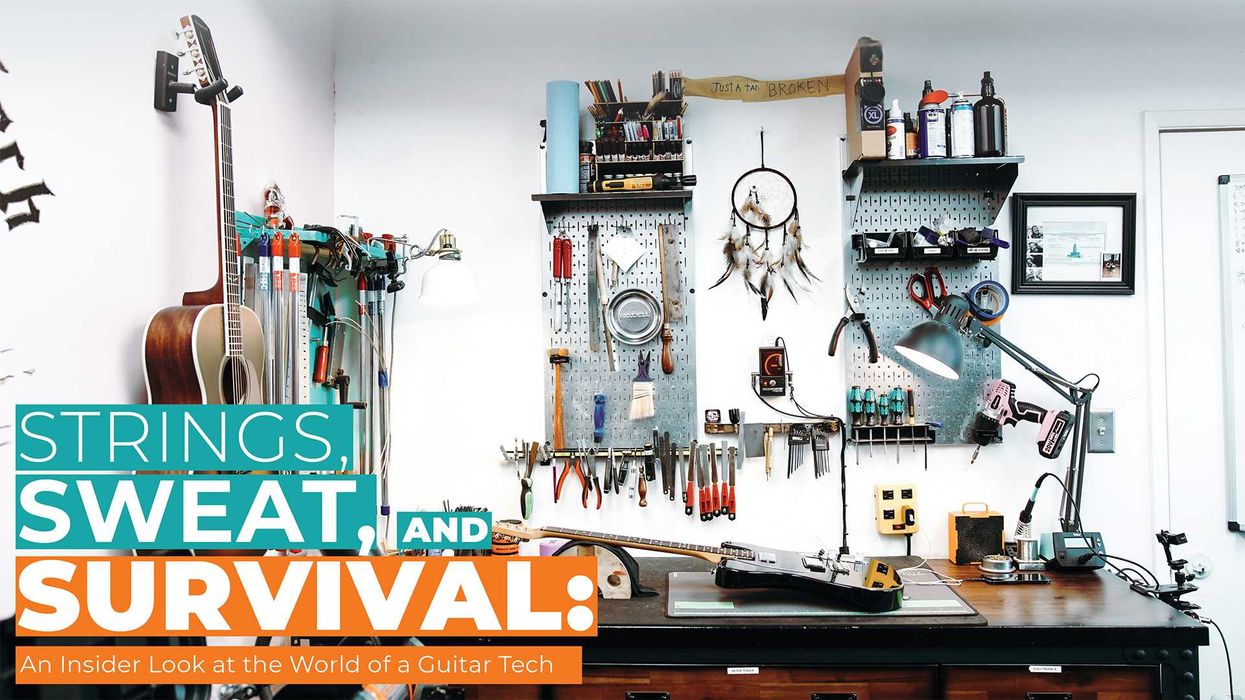
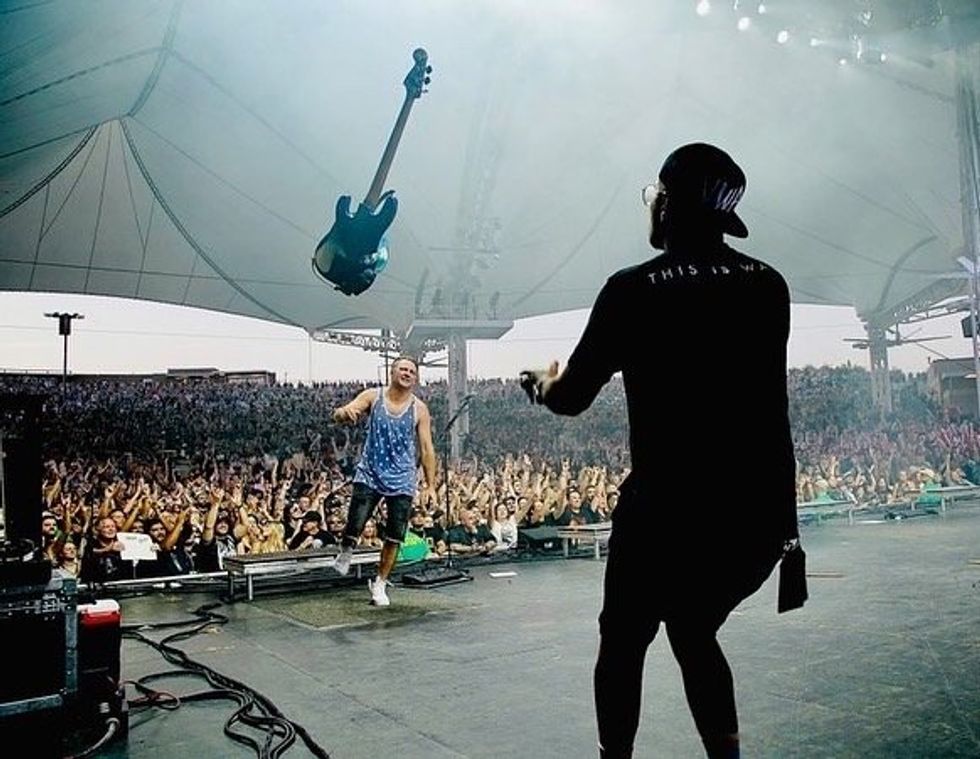 Luis Munoz makes the catch.
Luis Munoz makes the catch.